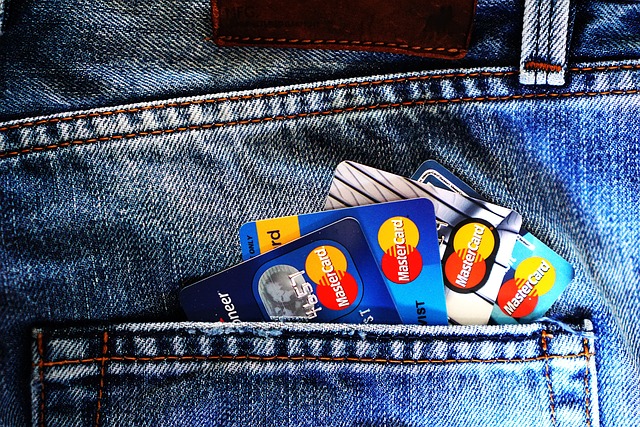Discover the intriguing world of soccer’s rarest penalty card: the Blue Card. Uncover the meaning behind this unique card and its impact on the game.
What is the Blue Card in Soccer?
The blue card in soccer is a relatively unknown and rarely used penalty card that carries significant consequences for the player who receives it. While the blue card is not officially recognized by FIFA, it has been implemented in certain grassroots and amateur leagues as a means of addressing unsporting behavior on the field. This unique card serves as a warning to players who exhibit excessive aggression, disrespect towards the officials, or serious misconduct that does not warrant a red card.
When a player is shown a blue card, they are required to leave the field temporarily, serving a two-minute suspension. Similar to the yellow card, the team of the player who receives a blue card will be temporarily reduced to a numerical disadvantage, known as a power play. This offers a strategic advantage to the opposing team, which can capitalize on the temporary absence of the penalized player. It is crucial for teams to adjust their tactics during this time, utilizing the extra space on the field and increasing their offensive efforts to maximize their scoring opportunities.
Understanding the Role of the Blue Card in the Game
The blue card, although not commonly seen in soccer, is a penalty card that carries significant consequences when shown on the field. Unlike the well-known yellow and red cards, the blue card is used in specific soccer leagues or tournaments, often in futsal variants of the game. This unique card is typically reserved for offenses that warrant a 2-minute suspension from play, similar to a sin bin in other sports.
When a player receives a blue card, they are required to leave the field for a temporary period, leaving their team with a numerical disadvantage. The opposing team is then given an advantage known as a powerplay, allowing them to have an extra player on the field for the duration of the suspension. It is crucial for players to avoid committing offenses that lead to a blue card, as it can drastically affect the outcome of the game.
Some common reasons for receiving a blue card include handballs, dangerous tackles, deliberate time-wasting, dissent towards the referee, or persistently fouling opponents. This penalty card serves as a way to maintain the flow and fairness of the game, ensuring that players adhere to the rules and avoid excessive misconduct. Despite its rarity, understanding the role of the blue card is essential for both players and spectators, as it adds an interesting dynamic to the game and reinforces the importance of maintaining discipline on the field.
Exploring the Significance of the Blue Card in Soccer
The blue card is a rarely seen penalty card in soccer that carries significant meaning when shown by a referee. While not as widely recognized as the yellow or red cards, it holds its own importance in the modern game. So, what does the blue card mean in soccer? Let’s dive into its significance.
-
Replacing the yellow card: In some variations of the sport, particularly in futsal leagues, the blue card serves as a temporary expulsion. When a player receives a blue card, they are required to leave the field for a specified amount of time, usually two minutes. This penalty is similar to the yellow card, but instead of a caution or warning, it results in a team playing with one less player temporarily.
-
Infraction severity: While not as severe as a red card, the blue card typically indicates a more serious offense than a cautionary yellow card. It is used for offenses that disrupt the game or show a blatant disregard for the rules. Some common circumstances that may warrant a blue card include deliberate handballs, unsportsmanlike conduct, or repeated fouls. It serves as a way for the referee to maintain control and discipline within the match, ensuring fair play for all involved.

Instances Where the Blue Card Might Be Used in Soccer
The blue card in soccer is a penalty card that is rarely seen on the pitch. It is primarily used in indoor soccer or futsal, where the rules differ slightly from traditional outdoor soccer. Here are some :
-
Serious unsporting behavior: The blue card can be shown to a player who exhibits serious unsporting behavior that goes beyond a yellow card offense. This may include intentionally injuring an opponent, using excessive force, or repeatedly disregarding the rules of the game.
-
Persistent dissent: If a player continuously argues with the referee or refuses to accept their decisions, they may receive a blue card. This penalty serves as a warning to the player that their behavior is unacceptable and disrupts the flow of the game.
-
Tactical fouling: In some instances, teams may intentionally commit tactical fouls to stop their opponents from scoring or gaining an advantage. If a player repeatedly commits deliberate fouls, especially when it prevents a clear goal-scoring opportunity, the referee may choose to show them a blue card.
-
Time-wasting: When a team is leading and wants to run down the clock, players may resort to time-wasting tactics such as delaying the restart of play or feigning injuries. If the referee determines that a player is deliberately wasting time, a blue card may be shown, indicating that their actions are not acceptable.
It is important to note that the use of the blue card varies depending on the competition and the specific rules in place. While it is not commonly seen in professional outdoor soccer, it serves as a disciplinary measure in indoor soccer to maintain fair play and sportsmanship on the field.
The Implications of Receiving a Blue Card in Matches
A blue card in soccer, also known as a rare penalty card, carries significant implications for players and teams involved in matches. Unlike the more common yellow and red cards, the blue card is used to signal a player’s temporary suspension from the field. When a player receives a blue card, they must leave the pitch for a set duration, typically ranging from two to five minutes, during which their team is forced to play with one less player.
The blue card rule was introduced to soccer in an effort to curb unsportsmanlike behavior and to promote fair play. It is mainly used in indoor soccer or futsal matches, where the confined space can increase the risk of dangerous play. When a player commits a serious foul or displays persistent misconduct, the referee may issue them a blue card. While the penalized player sits out, their team must adapt their strategies to compensate for the numerical disadvantage, which can have a significant impact on the outcome of the match. Notably, unlike a red card, a player who receives a blue card is allowed to return to the field once their suspension period ends, giving them an opportunity to correct their behavior and contribute to their team’s performance. However, receiving multiple blue cards in a match can result in a red card and subsequent ejection from the game. So players must remain cautious and disciplined even after returning from a blue card suspension. Overall, the blue card serves as a unique penalty tool in soccer that encourages fair play and challenges teams to adapt and overcome adversity during matches.
Strategies for Avoiding a Blue Card in Soccer
Blue Card in soccer is a rare penalty card that is given to a player for committing serious offenses. While not as common as the yellow or red card, the blue card can still have significant consequences for both the player and the team. To avoid receiving a blue card, players should consider implementing the following strategies:
-
Discipline and control: One of the best ways to avoid a blue card is by maintaining discipline and control on the field. This means refraining from unnecessary rough play, fouls, or aggressive behavior that may result in penalization. By staying composed and focused, players can minimize the risk of receiving a blue card.
-
Fair play and sportsmanship: Another important strategy is to always prioritize fair play and sportsmanship. Respecting the rules of the game, respecting the opponents, and avoiding unsportsmanlike conduct can greatly reduce the likelihood of being penalized with a blue card. Players should strive to compete fairly, without resorting to cheating or unscrupulous tactics. Remember, good sportsmanship leads to a more enjoyable game for everyone involved.
It’s important to note that the blue card may vary in its significance depending on the specific rules and regulations of the competition or league. Therefore, it is crucial for players and teams to familiarize themselves with the blue card’s implications in their respective contexts. By employing these strategies, players can greatly decrease their chances of receiving a blue card, maintaining a positive reputation on the field, and ensuring their team’s success. Stay focused, fair, and disciplined to steer clear of any unwanted blue cards.
How the Blue Card Differs from Traditional Penalty Cards
The blue card, a relatively new addition to the world of soccer, is a penalty card that has caught the attention of players, coaches, and fans alike. But what exactly does it mean, and how does it differ from the traditional red and yellow cards? Let’s break it down.
-
Temporary Suspension: Unlike red and yellow cards, the blue card signifies a temporary suspension from the game. When a player receives a blue card, they must leave the field for a set period of time, usually around five minutes. This gives them a chance to reflect on their behavior and the opportunity to re-enter the game with a fresh mindset.
-
Accumulated Fouls: The blue card is typically shown for repeated or severe fouls committed by an individual player. If a player accumulates a certain number of blue cards throughout a match or a season, they may face more severe consequences, such as a permanent expulsion from the game or suspension for future matches.
-
Additional Penalty: In addition to the temporary suspension, the team of the player receiving the blue card often faces other penalties. For example, the opposing team may be awarded a free kick or penalty kick, putting them at an advantage. This adds an extra layer of consequence to the blue card, emphasizing the importance of fair play and sportsmanship.
It’s important to note that the blue card is still a relatively rare sight in soccer matches, as it is not universally adopted. However, its introduction has sparked discussions about player behavior and the need for improved discipline on the field. So, the next time you see a player receive a blue card, you’ll know exactly what it means and how it differs from the traditional red and yellow cards.
The Controversy Surrounding the Blue Card in Soccer
In the world of soccer, there is a card that sparks controversy and confusion among fans and players alike – the blue card. Unlike its well-known counterparts, the yellow and red cards, the blue card is a relatively rare penalty card that carries specific implications in the game. So, what exactly does the blue card mean in soccer?
Contrary to popular belief, the blue card is not recognized by the official rules of the sport. Instead, it is used in some variations and tournaments, most notably in futsal. When a player receives a blue card, it signifies a temporary suspension from the game due to a serious infraction. The player must leave the field for a predetermined period of time, often around two minutes, while his or her team is reduced to a temporary numerical disadvantage. It serves as a disciplinary measure to punish severe fouls and misconduct, giving the offended team a chance to capitalize on the temporary imbalance.
The Evolution of the Blue Card and Its Impact on the Game
The blue card has become a topic of interest in the world of soccer, as it represents a rare penalty card that can drastically impact the course of a game. Unlike the familiar yellow and red cards, the blue card is relatively new to the sport, making its first appearance in futsal tournaments in 2012. Since then, it has garnered attention for its uniqueness and potential game-changing consequences.
The blue card is primarily used to penalize specific infractions, such as violent conduct, serious foul play, or dissent towards the referee. When a player receives a blue card, they are immediately sent off the field and forced to serve a two-minute penalty. This temporary removal from the game can greatly affect the dynamics of the teams involved, as the penalized side is left with a numerical disadvantage for the duration of the punishment.
One of the key impacts of the blue card is the strategic shift it necessitates for teams. With a player down, the team in penalty finds itself in a vulnerable position, requiring them to adjust their tactics to maintain a solid defense against their opponents. On the other hand, the opposing team gains a distinct advantage, enabling them to exploit the temporary numerical superiority to create goal-scoring opportunities. This power play scenario can lead to intense moments of play, as teams become more aggressive and resourceful in their attempts to capitalize on their opponent’s disadvantage.
In conclusion, the blue card represents a rare penalty card in soccer that has become an intriguing element in the sport. With its potential to alter the course of a game and create strategic challenges for teams, it has certainly made its mark on the world of soccer. As players and fans alike continue to familiarize themselves with the blue card and its implications, its impact on the game is sure to be a topic of ongoing discussion and analysis.
Recommendations for Referees and Players Regarding Blue Card Usage in Soccer
Blue cards are a rarity in soccer, but it is essential for referees and players to understand their significance and how they should be handled. Here are some recommendations to consider when it comes to the usage of blue cards on the field.
-
Use of blue cards: Blue cards are typically used to penalize unsporting behavior that may not warrant a red card but still require disciplinary action. Referees should be well aware of the circumstances that warrant a blue card, such as persistent fouling, dissent, or simulation. It is crucial for referees to use blue cards judiciously and consistently to maintain fairness and discourage unsportsmanlike conduct.
-
Communication and explanation: When a blue card is issued, clear and concise communication is vital. Referees should make it a priority to explain the reasoning behind the issuance of a blue card to both the player and their teammates. This not only helps in ensuring transparency but also educates players on the boundaries of fair play. Players, on the other hand, must acknowledge the decision respectfully to maintain the harmony of the game.
-
Learning from blue cards: For players, receiving a blue card should act as a wake-up call to reassess their behavior on the field. It serves as an opportunity for self-improvement and learning from mistakes. Understanding the specific action that led to the blue card can help players adjust their conduct and play the sport within its intended spirit.
Remember, while blue cards are uncommon, their proper usage can contribute to a more disciplined and sportsmanlike soccer environment. By adhering to these recommendations, both referees and players can ensure that the rare penalty card remains a fair tool in maintaining the integrity and spirit of the beautiful game. In conclusion, the blue card in soccer is a rare penalty card that signifies a temporary substitution for a player’s misconduct. It serves as a disciplinary tool and promotes fair play on the field. Understanding its meaning adds valuable knowledge to any soccer enthusiast’s arsenal. Stay informed, stay updated!



